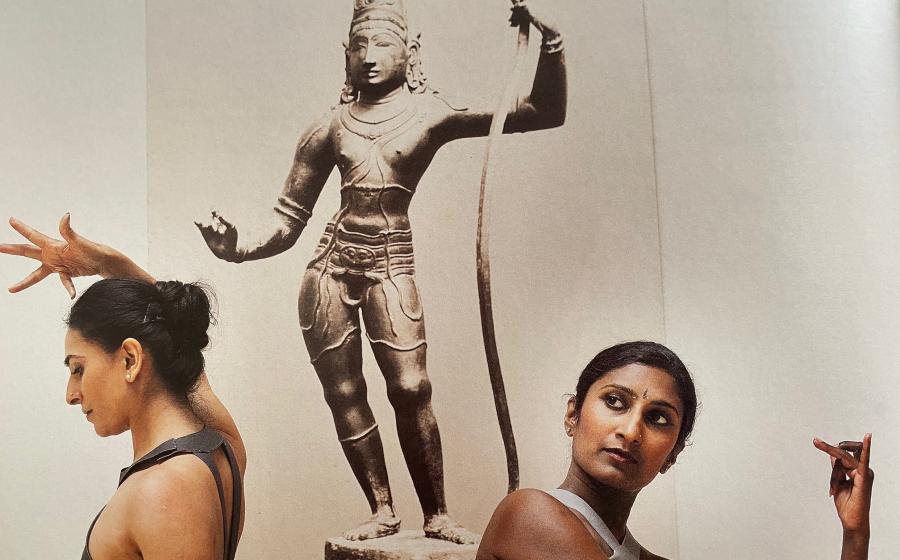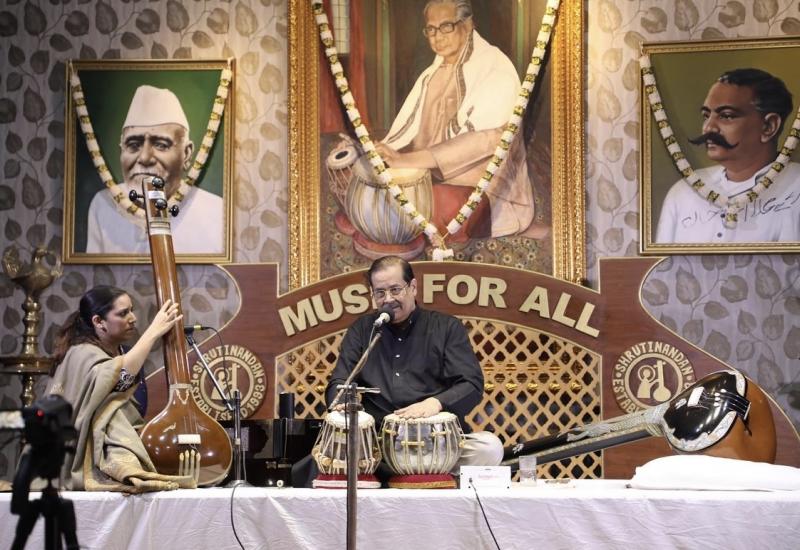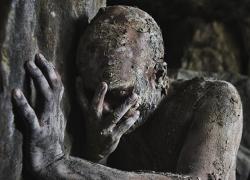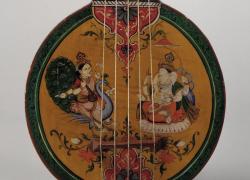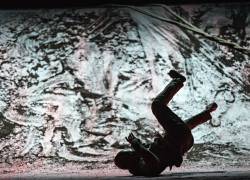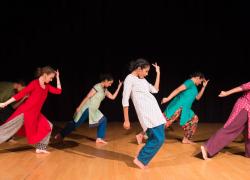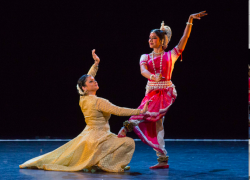Heritage – Stone or Water?
Heritage is arguably one of mankind‘s greatest assets. But how should dance heritage inform practice in the twenty-first century? Naseem Khan looks at the interplay between continuity and change.
This article is abridged from a published piece by the author Naseem Khan, in Pulse magazine issue 101, June 2008. With a national program of South Asian Heritage currently being celebrated nationally, we thought it appropriate to learn from the deliberations of scholars, activists and theorists before us. Naseem Khan’s voice (1939-2017) has been pivotal in the field of diverse arts.
The line-up at the end of Daredevas would have shocked my dance teachers, if the event had been transported back to the 1960s. Dancers costumed in black leggings, rather than dhotis and the fabulous silks?
Of course, mindsets were very different then, and history played a part. When I started learning to dance – first of all with Pandit Ram Gopal and then more intensively with Professor Krishna Rao and his wife Chandrabhaga Devi – the influence of newly independent India was strong. Nation-building was the order of the day; and with that came the insistence on longevity of tradition, its unbroken purity and glorious heritage. ‘Never move out’, our dance teachers used to say’, ‘don’t go and take classes more widely, not even with people in your own style’.
All that is understandable. The community in Britain at the time was very young and clung fast to a principle of ‘no change’. My own childhood was lived within a tiny Indian enclave in Birmingham, peopled entirely by doctors apart from one solitary engineer! In 1939, records show that they were just 100 Indians in the city. It was a community without infrastructure: no shops, no community centres, no temple, mosque or gurdwaras. But despite that, a sense of roots was maintained with a kind of defensive ferocity. At a recent UN conference on Heritage, Legacy, Leadership, Doudou Diene, Rapporteur on Racism, spoke glowingly of culture. He called it ‘an inner heritage, the inner force that keeps us going’. My community would have endorsed that.
In a sense all the issues that were present then (‘60s) are returning now (2000s).The South Asian dance world has been dealing with questions that arise around the place of heritage and tradition for a very long time.
We come up against two major interrelated themes: the first is memory and how it connects with heritage; secondly, how for instance can we reproduce the past when our values and sensibilities are so much of the present? And lastly, how accurately can we remember the past and therefore how subjective is that understanding of heritage?
Heritage cannot be considered – paradoxically – without also accepting the companion dynamic of change. The sense of heritage grows and is formed by an emotional engagement, by an individual act of ownership. We create our sense of heritage by our own imaginations, and we build it into our own DNA. Our feelings about heritage are integrally connected and interwoven with our idea of who we are; and that in turn connects with what we want to pass on, and why we find it so very hard to have it challenged.
That of course accounts for the tension at the heart of dance. How do we accept change but at the same time hold onto the essence of the past? Why choose? And this quality of being able to contain duality or ambiguity brings us back to dance. It has been quite common for dancers to complain that the funders discriminate and favour contemporary over classical work. But that creates a construct that seems to establish two separate developments. Where is the line to be drawn and what keeps heritage alive but does not at the same time ossify it?
A short time ago I got a chance to explore that suggested dichotomy in a project called ‘The International City’, for the research body, Comedia. It was based around a series of interviews with artists of all sorts about their practice. What choices did they make and how were these determined? Peter Badejo for a start rejected the whole idea of a dichotomy. ‘There’s no way you’ll have a tree with good leaves without the taproot’. Shobana Jeyasingh echoed this conviction. ‘To have a juncture I have something to disjuncture from…’ Each of the artists interviewed used heritage consciously and unconsciously, but re-invented it.
Heritage is alive – it grows out of a tap root and creates flowers that might be surprising even to the tree. It exists within a number of time zones and time itself is not linear but layered. The line-up at the Southbank Centre expresses that fact perfectly; as do the performances at Liverpool‘s Transitions Conference. Shane Shambhu and Sara Whicheloe work at opposite ends of the bharatanatyam spectrum, but share a sense of a base, however diverse their work turns out to be in the final analysis. And people at the conference got to see the premiere of Bahok. Choreographed by Akram Khan for a company that included dancers from Beijing who are trained in classical ballet, it’s provided another take on heritage revisited. The piece itself – set in an anonymous departure lounge – was in fact an interaction between memory and change. ‘Bahok’ means carrier in Bengali, and Khan’s dancers carried within them slivers of memories. Expressed and danced in different configurations in the piece, the diverse stories shifted, changed, mutated. They were funny, resilient, sad, poignant. The styles were diverse, with kathak and ballet and contemporary shining through.
So whose heritage? In this case the work existed at a crossroads, taking views from many sides. Holding onto memory but at the same time accepting change – maybe that is the very best place to be.
Naseem Khan (11 August 1939- 8 June 1939) was a cultural activist and arts journalist.
Read Obituary here https://www.theguardian.com/culture/2017/jun/30/naseem-khan-obituary

